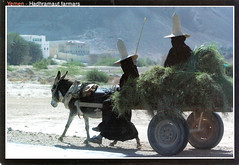Argyll is part of the Scottish Highlands. Just by looking at this map postcard to your left, you can see how mountainous the northwestern two-thirds of the nation is - this comprises the Highlands, more or less. The Scottish Highlands are quite empty - they have one of the least-densely populated areas in all of Europe. Culturally, the Scottish Highlands is quite different than the neighboring Lowlands. The peoples of the Highlands were traditionally the Gaelic-speaking Scotsman, and some rural areas of the Outer Hebrides (the larger islands northwest of the mainland) still speak Gaelic. This makes Gaelic Highland Scotland more linguistically related to Ireland than to mainland Britain.
The region of Argyll (see here for map) is a coastal region of the Scottish Highlands, and the second largest county in Scotland. The name derives from the Old Gaelic airer Goídel, or "border region of the Gaels." The word airer carries the additional meaning of the word "coast" when applied to maritime regions, so the place name can also be translated as "Coast of the Gaels." The largest two towns in this sparsely-populated county have just barely over 8,000 people. The county's third-largest town, Campbeltown (pop. 5144), is historically known as a whiskey-producing region and home to distilleries such as Glengyle and Glen Scotia.
 Campbeltown almost certainly received its name from the Scottish clan that presided over the Argyll region - Clan Campbell. (The chief of Clan Campbell eventually became the Duke of Argyll.) Although the British government attempted to quash clan culture following the Jacobite Uprisings of the 18th century, the clan culture has persisted, particularly in rural areas. In a recent Yahoo! Answers post I found during my internet research for this post, I found this interesting example of hostilities between clans that began over 300 years ago and continue to this day. I recommend you read the post, but I particularly loved the example of the Clachaig Inn in Glencoe (historically a region presided over by Clan Donald), which still hangs a sign on the door stating "No Hawkers or Campbells."
Campbeltown almost certainly received its name from the Scottish clan that presided over the Argyll region - Clan Campbell. (The chief of Clan Campbell eventually became the Duke of Argyll.) Although the British government attempted to quash clan culture following the Jacobite Uprisings of the 18th century, the clan culture has persisted, particularly in rural areas. In a recent Yahoo! Answers post I found during my internet research for this post, I found this interesting example of hostilities between clans that began over 300 years ago and continue to this day. I recommend you read the post, but I particularly loved the example of the Clachaig Inn in Glencoe (historically a region presided over by Clan Donald), which still hangs a sign on the door stating "No Hawkers or Campbells."The Campbell clan's name derives from the Gaelic caimbeul, meaning "wry mouth," "crooked mouth," or "twisted mouth." The earliest known Campbell is Gilleasbaig of Menstrie, who was active around the year 1260. The Clan Campbell tartan, known as Black Watch, is highlighted in a red box on the above postcard. And in case you were wondering: your favorite pair of argyle socks do, in fact, get their name from the Argyll region of Scotland.
 And this leads me to the postcard that inspired this entire post: the beautiful Kilchurn Castle, located on Loch Awe in Argyll. Kilchurn Castle was constructed around 1450 by Sir Colin Campbell as a five-storey tower house with a courtyard defended by an outer wall. The castle passed to Clan MacGregor for a time and then returned to Clan Campbell through marriage. The MacGregors remained stewards of the castle until the early 17th century, when a feud between the two clans brought the castle back into the possession of Clan Campbell. In 1760, the castle was badly damaged by a lightning strike and was completely abandoned. If you visit the castle today, the turret of a tower still rests upside-down in the courtyard as a result of the lightning strike 250 years ago.
And this leads me to the postcard that inspired this entire post: the beautiful Kilchurn Castle, located on Loch Awe in Argyll. Kilchurn Castle was constructed around 1450 by Sir Colin Campbell as a five-storey tower house with a courtyard defended by an outer wall. The castle passed to Clan MacGregor for a time and then returned to Clan Campbell through marriage. The MacGregors remained stewards of the castle until the early 17th century, when a feud between the two clans brought the castle back into the possession of Clan Campbell. In 1760, the castle was badly damaged by a lightning strike and was completely abandoned. If you visit the castle today, the turret of a tower still rests upside-down in the courtyard as a result of the lightning strike 250 years ago.The castle is now under the protection of the Scottish government, and you can visit it in the summer time by boat or on foot. You can read more history of the castle and see many lovely photos at this Undiscovered Scotland website.




















